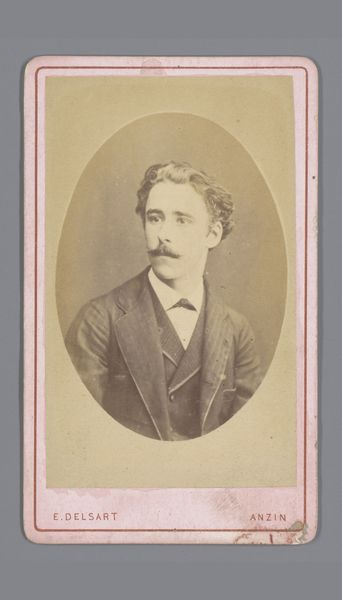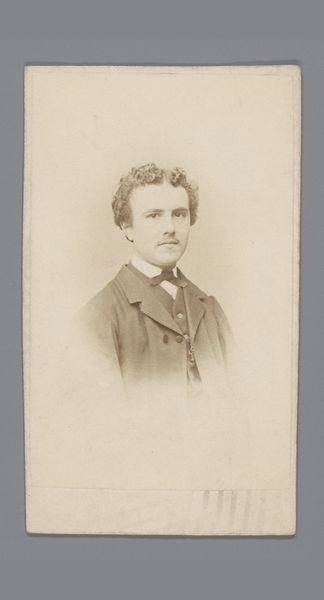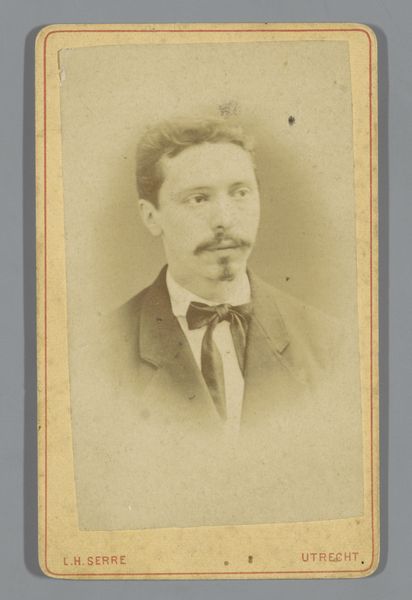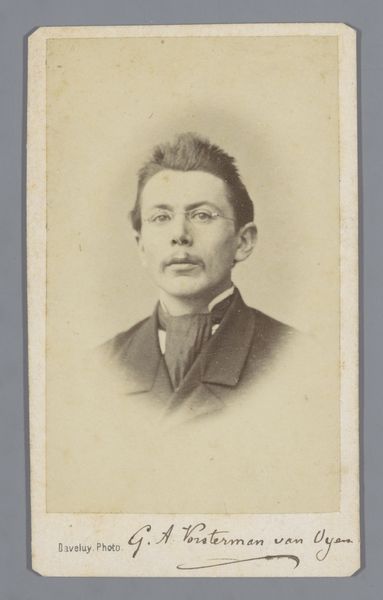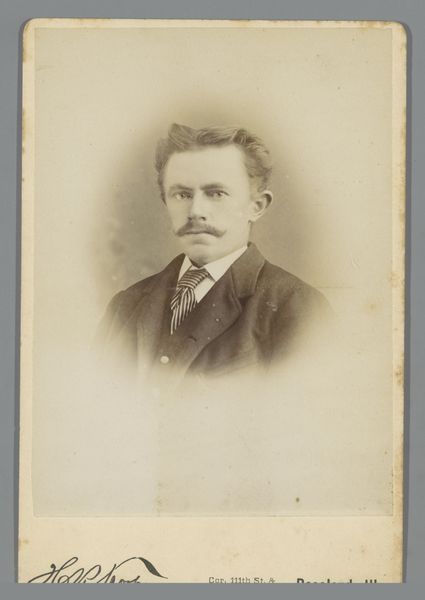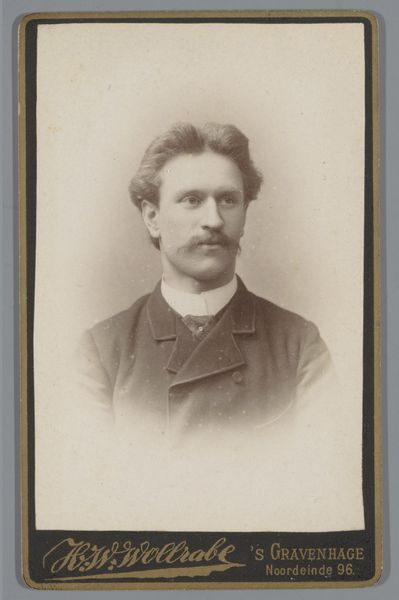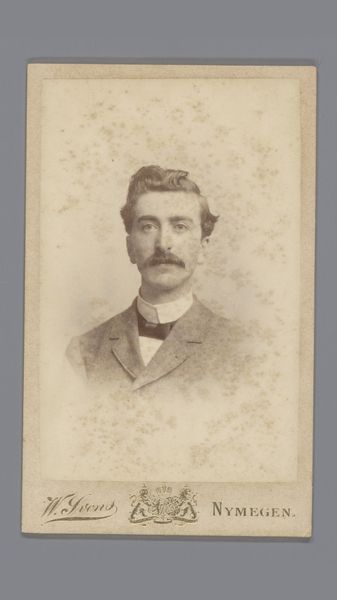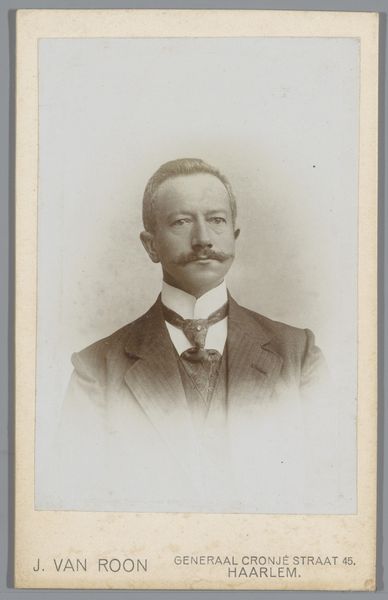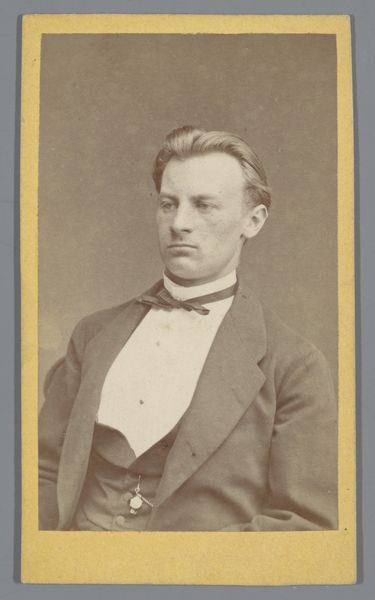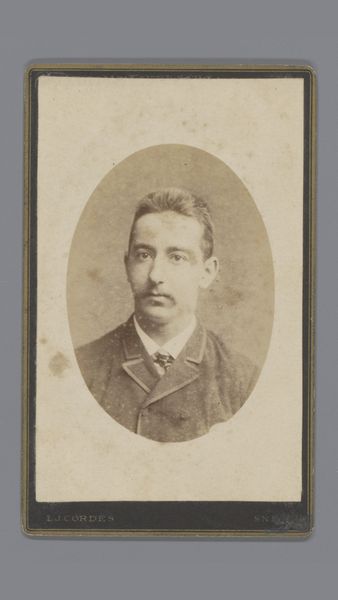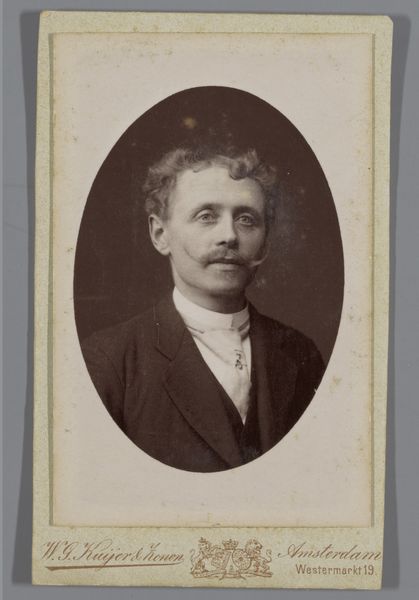
daguerreotype, photography, gelatin-silver-print
#
portrait
#
daguerreotype
#
photography
#
historical photography
#
historical fashion
#
gelatin-silver-print
#
realism
Dimensions: height 105 mm, width 64 mm
Copyright: Rijks Museum: Open Domain
Editor: This gelatin-silver print from the late 19th century, titled "Portrait of an Unknown Man, Referred to as Julius," by Albert Greiner, has a kind of melancholy aura about it, don't you think? What speaks to you most when you look at it? Curator: The figure's meticulous grooming is quite striking, isn’t it? The carefully arranged hair, the neatly trimmed mustache, the elegant bow tie - they are all deliberate markers. Consider how portraiture, especially photography, functioned then. It wasn't just about recording an image, but about crafting an identity, often aspirational. This man, identified as ‘Julius,’ wants to be remembered in a specific way. The objects that define him represent control, wealth, and, of course, power. Editor: So you're suggesting that this portrait isn't just a simple snapshot, but a constructed image meant to convey a certain message? Curator: Exactly. Every element contributes to this carefully constructed visual language. Think about the "unknown man’s" gaze, too: it projects both a hint of vulnerability and direct confidence, an ambiguous emotional tension common to portraiture across the ages. What does it make you think about identity today? Editor: That’s interesting, especially because his identity is, after all, "unknown." It's like he's curating an identity without revealing who he really is. I guess we all do that, in a way, with social media and whatnot. Curator: Precisely! This "Julius", perhaps an alias, reminds us of our perennial human desire to fashion our self-image. I wonder who he was. Editor: I never thought a portrait of an unknown man from the 1800s could be so relevant to today's image-conscious society. Curator: Indeed, it reveals the ongoing power of symbols.
Comments
No comments
Be the first to comment and join the conversation on the ultimate creative platform.
